Politics
1965 Was Not A Stalemate - India Had Won The War
Nitin Gokhale
Sep 01, 2015, 07:08 PM | Updated Feb 11, 2016, 09:22 AM IST
Save & read from anywhere!
Bookmark stories for easy access on any device or the Swarajya app.
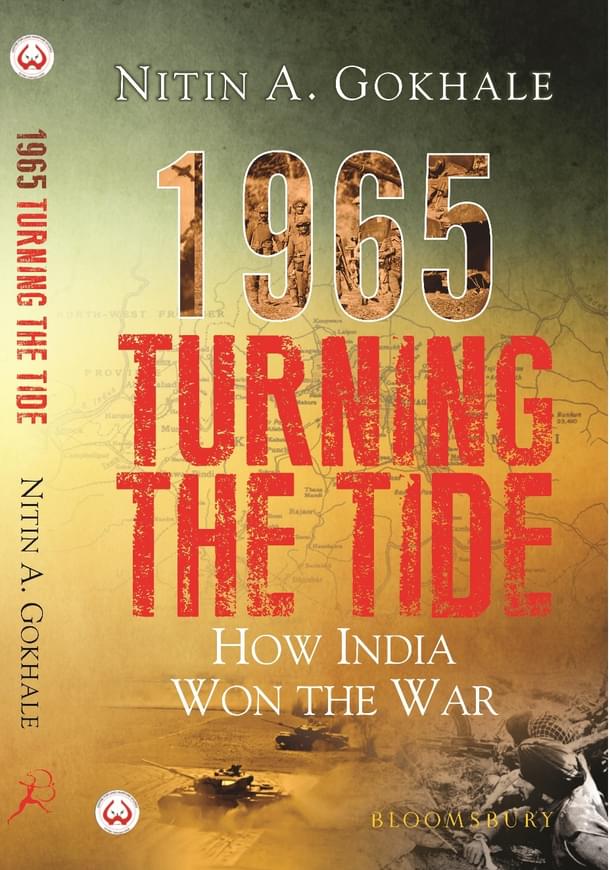
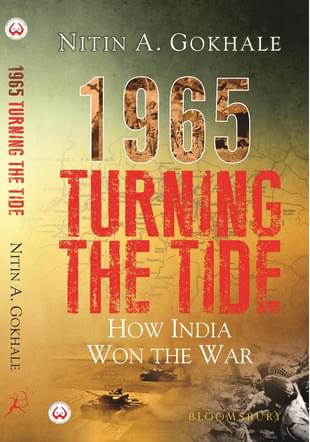
While most commentators conclude that it was a stalemate, Nitin A Gokhale argues it is India that had won the 1965 Indo-Pak war. Here’s a sneak peek into his book, 1965 Turning The Tide: How India Won The War, launching today.
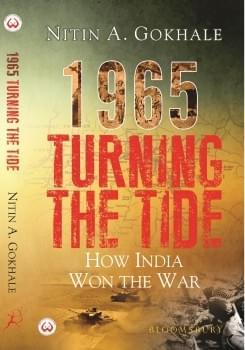
How should today’s generation recall the 1965 war between India and Pakistan? Who won? Who lost? Or was it a stalemate, as most commentators have concluded?
To get the right answer, we must first define what constitutes a military victory. Is it the capture of a larger territory as compared to what the enemy has attained? Does the killing of thousands of soldiers make it a victory? Is it all about massive destruction of the enemy’s military assets? Or does it constitute thwarting the enemy’s main objective?
There is no single definition but if one were to go by the answers to all the above questions, there is only one conclusion: India won the war. Let’s look at the numbers first.
India’s Victory or Pakistan’s Loss?
According to official historians Prasad and Thapliyal, India captured 1,920 square km of Pakistani territory (Map 16) while losing control over 540 square km of its own land. While 2,862 Indian soldiers were killed, Pakistan had 5,800 killed, according to then Defence Minister YB Chavan’s statement in the Rajya Sabha (Pakistan puts the figure of killed at 1,033).
The biggest loss for Pakistan was the destruction of its armour. Laced with the latest M-47 and M-48 Patton tanks, Pakistan’s 1 Armoured Division was seen to be an invincible force at the start of the war. By the time war ended on 22 September, the Pakistani armour, despite its superior tanks, was destroyed by the less-fancied Indian tanks of World War II vintage. Over 450 Pakistani tanks were either completely destroyed or captured by the Indian Army. By comparison, India suffered the loss of less than 100 tanks.
Yet, more than the statistics, it is instructive to look back and figure out if Pakistan could really achieve the objectives with which it initiated the war.
Remember, the first objective was to ‘liberate’ Jammu and Kashmir from Indian control. Operation Gibraltar was aimed precisely at that. Bhutto had prevailed over the military and forced it to execute a plan that was premised on a faulty assumption that the Kashmiri people would rise up in revolt. The second wrong assumption was that the mixed force of Mujahids and regulars would be able to stand up to the Indian Army’s counter-measures.
As it turned out, the Kashmiris did not rebel and the Indian Army, despite its relatively low strength in the Kashmir Valley, managed to neutralise the infiltrators with substantial help from the locals. Pakistan’s first strategic objective thus stood defeated.
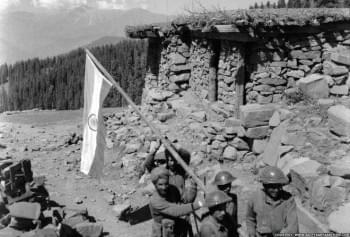
The failure of Operation Gibraltar brought unbearable pressure on Ayub, forcing him to launch Operation Grand Slam. It was a masterstroke in conception but faltered in execution. India’s defences were weak in the Chhamb–Jaurian sector and its intelligence had totally failed to anticipate a Pakistani offensive in that sector.
Had Pakistan been able to reach the Akhnoor bridge as planned on 1 September, Kashmir would, in all probability, have been cut off, putting the Indian political and military leadership under great pressure. But a combination of nepotism (Ayub changing the command of the offensive force at a crucial juncture to favour his own favourite, Yahya Khan) and some good old luck saved the day for India, leading to the failure of Pakistan’s second strategic objective.
Finally, Pakistan’s last shot at glory by sending its much-touted 1 Armoured Division into Khem Karan came a cropper, thanks to a combination of timidity and ineptitude on the part of the Pakistani military leadership and the resolute fight put up by the Indian Army. In the end, the so-called glorious war planned by Ayub turned into a military-politico-diplomatic defeat for Pakistan.
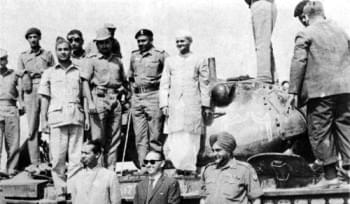
So, a country that had begun the war with the ultimate objective of teaching the enemy a lasting lesson was forced to accept international intervention. Air Marshal Asghar Khan notes: ‘They (Ayub and the army) had planned Operation Gibraltar for self-glory rather than in the national interest. It was a wrong war. And they misled the nation with a big lie that India, rather than Pakistan, had provoked the war and that we were the victims of Indian aggression.’
As many neutral observers noted in the immediate aftermath of the 22-day war, India was a clear victor. Dennis Kux in his India and the United States: Estranged democracies says: ‘Although both sides lost heavily in men and material, and neither gained a decisive military advantage, India had the better of the war.
New Delhi achieved its basic goal of thwarting Pakistan’s attempt to seize Kashmir by force. Pakistan gained nothing from a conflict which it had instigated.’ English historian John Keay in his book India: A History sums it up accurately: ‘The 1965 Indo–Pak war lasted barely a month. Pakistan made gains in the Rajasthan desert but its main push against India’s Jammu–Srinagar road link was repulsed and Indian tanks advanced to within a sight of Lahore.
Both sides claimed victory but India had most to celebrate.’ Stanley Wolpert, the noted writer on the subcontinent’s history, had this to say in his book India: ‘In three weeks the second Indo–Pak war ended in what appeared to be a draw when the embargo placed by Washington on US ammunition and replacements for both armies forced cessation of conflict before either side won a clear victory. India, however, was in a position to inflict grave damage to, if not capture, Pakistan’s capital of the Punjab when the ceasefire was called, and controlled Kashmir’s strategic Uri–Poonch bulge, much to Ayub’s chagrin.’
Fifty years after, it is clear that India not only thwarted the Pakistani designs but also inflicted unacceptable losses on the Pakistani military, triggering many changes within that country’s politico-military structure. Today, even Ayub’s own son Gauhar Ayub Khan admits that the war should not have taken place. In an interview to Outlook, he says: ‘It was a war that should not have taken place. It set Pakistan back and was also costly for India. It led from events in Kashmir which Pakistan considered would be contained there and not turn into an open conflict between the two countries. But when India attacked Lahore and other fronts, it led to a general war between India and Pakistan. Ayub Khan was not looking for a war with India…’
Another crucial mistake that Pakistan made was to seek China’s help in putting pressure on India. This angered and alarmed the United States and the United Kingdom. After all, Pakistan was a signatory to the SEATO and CENTO treaties signed mainly to curb the advance of communism. In the prevailing international situation then, it was diplomatic suicide. American President Lyndon Johnson, furious at Pakistan enlisting communist China’s help, put an embargo on weapons supply to Pakistan.
Pakistan lost the United States as a benefactor until 1979, when the Soviet invasion of Afghanistan rekindled American interest in Pakistan. In fact it can be safely said that the defeat in 1965, firmly propelled Pakistan into the Chinese camp and indeed initiated the process of a Sino-Pakistan nexus against India which, today has assumed a menacing threat to India. Indeed, the Pakistan-China collaboration in 1965 against India provided the template for the current collusion against New Delhi.
Another unintended consequence of the 1965 war was the boost that the opposition leaders in East Pakistan (now Bangladesh) received to their demand for more autonomy to the eastern wing. When asked what the security guarantees for the eastern part of undivided Pakistan were against an Indian military campaign, Ayub or his military commanders had no convincing reply. This encouraged Sheikh Mujibur Rehman, leader of the Awami League, to intensify his agitation for greater autonomy for the Bengali-majority East Pakistan. This eventually led to the fragmentation of
Pakistan and the creation of Bangladesh, aided in large measure by India’s military might and diplomatic offensive in 1971.
All the same, if Pakistan suffered internal turmoil in the wake of the 1965 experience, the Indian military too experienced many embarrassing moments. There were lasting lessons too, but first the gaffes.
What India Gained and Lost
While materially India clearly had an upper hand at the end of the war, the Indian military could have done better with a little more dash and imagination on the part of its leaders. Field commanders lacked a clear objective. They did not know during or before the conflict if the aim of the campaign was an all-out war, a war for conquest of territory, or simply to whittle down Pakistan’s war-waging capability. It was only after the conclusion of the war that the top brass was supposed to have mentioned that the 22-day military campaign was intended to be a war of attrition.
Moreover, except for a limited number of actions, the performance of India’s field commanders left a lot to be desired. For most part, the leadership was too defensive—cautious and tentative even—in its thinking. The overall Indian military thinking also lacked a clear understanding of the larger objective. The strategy to attack the enemy on a wide front instead of concentrating attacks at a few vital places proved to be detrimental.
At many places—Khem Karan, Mirpur, Dograi, Dera Baba Nanak and even Phillora—the Indian Army brass did not press home the initial advantage it had gained through superior tactical leadership and initiative. In some cases, the senior leadership dithered and failed to lead their men from the front or direct the course of the battle. The lack of an aggressive spirit meant India let go of several opportunities to deliver a crippling blow to the Pakistanis.
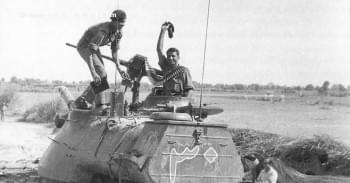
The biggest failure, however, was on the intelligence front.
Despite the ongoing tension in Kashmir and the Kutch episode, Indian intelligence failed to anticipate the massive infiltration planned by Pakistan under Operation Gibraltar. There was also a lack of assessment of how Pakistan might respond to failure of Operation Gibraltar. Had the intelligence apparatus been effective, India should have known of the concentration and preparations for the thrust in Chhamb–Jaurian (Operation Grand Slam).
But by all accounts, everyone was caught by surprise at the magnitude of the Pakistani offensive launched on 1 September. As PVR Rao, then defence secretary, was to observe later: ‘The attack by Pakistan at Chhamb on the morning of 1 September came as a surprise in the exact location and intensity. From 26 August there were heavy Pakistani troop movement in the area under our continuous observation, but the army had concluded that the attack would come further north.’
The bigger failure, and one that was perhaps of a larger strategic import, was India’s lack of ability to assess the limits of ammunition available with Pakistan. Despite knowing that the Americans—who were the principal weapons supplier to Pakistan at that time—always gave less than a month’s ammunition to its clients, India lacked intelligence on the shortage of ammunition in the Pakistani arsenal.
As it turned out, by 22 September—when ceasefire was declared—Pakistan had practically run out of its stock of ammunition, without any replenishment in sight since the Americans had already imposed an arms embargo. Had the war continued for some more time, Pakistan would have collapsed and, who knows, the subcontinental history would have taken a different turn. There was another, perhaps bigger, failure: of correct internal assessment. Army Chief General Chaudhuri told the prime minister to accept the ceasefire offer since by then India had used up most of its front-line ammunition.
As it turned out, by 22 September India had consumed only 14 per cent of its stocks. Moreover, India still had twice the number of Pakistani tanks at that stage of war. What the failure of intelligence cost India then is a matter of conjecture, but something good eventually came out of this. India bifurcated the tasks of collecting external and internal intelligence and created the Research and Analysis Wing (RAW). However, it took another three decades plus and a similar, if smaller, intelligence failure in 1999 to create a dedicated intelligence agency (Defence Intelligence Agency, or DIA) for the military.
In the final analysis, the 1965 war proved that the debacle in the 1962 war had less to do with the Indian Army than with failure on the politico-diplomatic front. The 22-day war could have certainly been conducted better but that’s the assessment in hindsight. The truth is: the Indian soldier acquitted himself during August–September 1965 and banished forever the ghosts of the 1962 defeat. The fruits of 1965 were to become spectacularly apparent six years later when the Indian military won its most famous—and decisive—victory in the 1971 war.
Had it not been for the experience gained in the 1965 war, the Indian military would still have been prisoner to a defeatist mentality imposed by the reverse against the Chinese. That was the biggest gain from the 1965 war. Let us therefore remember, recall and commemorate the 50 years gone of a war that India has largely forgotten, in an appropriate manner. We, as a nation, owe that debt of gratitude to the martyrs of 1965.
An authoritative defence analyst, media trainer and a multi-media reporter who started his career in 1983, Gokhale has worked across web, print and broadcast mediums over the last three decades. He has a rare distinction of living and reporting from India’s North-eastern region for 23 years.





